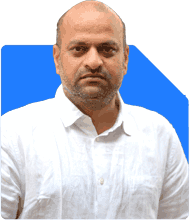My age is 49 , my wife's age is 44 and daughters age is 16 years I have taken a 15 L health insurance family floater policy from New India assurance 4 years back where the bonus accumulated is 7.5 L hence total coverage is now 22.5 L. I am paying premium of 37 K now for this. I was keen on public sector insurer as I came across lot of complaints with private sector insurers. We don't have any health issue except my wife have have family history of heart problem and cancer . How much more insurance coverage we need to take considering the premium is going to rise over time? Does it make sense to take critical illness or cancer policy separately.Please suggest.
Ans: Taking the right health insurance coverage is crucial, especially given the rising medical costs. With your current family floater policy of Rs. 22.5 lakhs and considering your wife's family history, it’s essential to evaluate your needs. Here’s a comprehensive guide to help you decide on additional coverage and whether a critical illness or cancer policy is necessary.
Current Health Insurance Coverage
Your existing policy has served you well, accumulating a bonus of Rs. 7.5 lakhs, increasing your coverage to Rs. 22.5 lakhs. This is a good base, especially since you’ve prioritized a public sector insurer due to concerns over private insurers.
Public sector insurers have a reputation for reliability and fewer complaints. Your choice is wise, given your specific concerns.
Assessing Your Coverage Needs
Health insurance needs can vary based on several factors, including age, family medical history, and lifestyle. Considering these factors, let's analyze your situation:
Age: At 49 and 44, you and your wife are approaching an age where medical issues become more common. Your daughter, at 16, still has a relatively low risk.
Medical History: Your wife’s family history of heart problems and cancer is a significant factor. This history increases the likelihood of needing substantial medical care in the future.
Rising Medical Costs: Medical inflation in India is high. Treatments for severe illnesses can easily exceed Rs. 20 lakhs, especially in metropolitan areas.
Given these points, it might be wise to consider additional coverage. A coverage of Rs. 30-50 lakhs could be more appropriate.
Evaluating the Need for Additional Coverage
To determine if you need more coverage, consider these aspects:
Hospitalization Costs: Major treatments and surgeries can be very expensive. Even with Rs. 22.5 lakhs coverage, a few hospitalizations could exhaust your policy limits quickly.
Treatment Advances: Medical technology is advancing, leading to higher costs for newer treatments and procedures.
Geographical Location: If you live in a metro city, medical costs are generally higher compared to smaller towns.
A top-up or super top-up policy could be a cost-effective way to increase your coverage without significantly increasing premiums. These policies kick in after a certain threshold is met, offering higher coverage at a lower cost.
Critical Illness and Cancer Policies
Given your wife's family history, a critical illness policy or a specific cancer policy could be beneficial. These policies provide a lump-sum payment on diagnosis of specific illnesses, which can be used for treatment, recovery, or even daily expenses.
Critical Illness Policy: Covers a range of severe illnesses like heart attack, stroke, kidney failure, and more. It provides financial support at a crucial time, helping to cover costs that may not be included in a regular health policy.
Cancer Policy: Specifically designed for cancer treatment. Cancer treatment can be prolonged and expensive. This policy ensures that financial constraints do not hinder the treatment process.
Benefits of Critical Illness Policies
Lump-Sum Payment: On diagnosis, you receive a lump-sum amount which can be used for any purpose, giving you flexibility.
Wide Coverage: Covers several major illnesses which can be financially draining if not insured.
Peace of Mind: Knowing you have coverage for major illnesses can reduce stress and allow you to focus on recovery.
Benefits of Cancer Policies
Specialized Coverage: Tailored specifically for cancer, ensuring comprehensive coverage for all stages of the disease.
Enhanced Support: Provides financial support for expensive treatments, ensuring quality care without worrying about costs.
Flexibility: The payout can be used for treatment or other related expenses, providing financial flexibility during tough times.
Premium Considerations
Health insurance premiums do rise with age and medical inflation. To manage premium costs while ensuring adequate coverage, consider the following strategies:
Top-Up Plans: As mentioned, these can provide high coverage at lower premiums compared to base policies.
Family Floater Plans: These can sometimes be more economical than individual plans, especially when covering multiple family members.
Regular Review: Periodically review and adjust your coverage to match your current needs and financial situation.
Practical Steps to Enhance Coverage
Assess Your Needs Regularly: Health needs change over time. Regularly assess your insurance coverage to ensure it aligns with your current and future needs.
Consider Top-Up Policies: If you find your current coverage inadequate, a top-up policy can provide additional coverage at a reasonable cost.
Evaluate Critical Illness and Cancer Policies: Given your wife's family history, these policies can provide financial security in case of serious illnesses.
Consult a Certified Financial Planner: They can provide personalized advice, ensuring your insurance strategy fits within your broader financial plan.
You’ve taken commendable steps to ensure your family's health and financial security. Your proactive approach to health insurance is admirable. It’s evident that you care deeply about your family's well-being, and you're making informed decisions to protect them.
Final Insights
Ensuring adequate health insurance coverage is crucial, especially with rising medical costs and potential health risks. Your current coverage of Rs. 22.5 lakhs is a good start, but considering additional coverage could provide more security.
A top-up policy could enhance your coverage cost-effectively. Given your wife's family history, a critical illness or cancer policy could offer additional peace of mind and financial support.
Health insurance is not just about covering hospital bills; it's about securing your financial future against unforeseen medical expenses. By carefully evaluating your needs and considering additional coverage options, you can ensure comprehensive protection for your family.
Best Regards,
K. Ramalingam, MBA, CFP
Chief Financial Planner
www.holisticinvestment.in


























